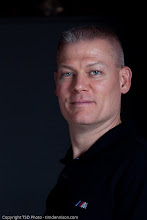 For some reason, lighthouses are one of those photographic icons that most people enjoy. It just so happens that there are four lighthouses in the nearby area, so I thought I might share them with you. This lighthouse is the Highland Light, also known as Cape Cod Light, located in Truro, MA. This light was built in 1857. At that time it sat 510 feet from the cliff. Back in July 1996, due to erosion, it was moved 453 feet to keep it away from the encroaching cliff. I was able to watch this marvel of engineering, and will say it was quite impressive.
For some reason, lighthouses are one of those photographic icons that most people enjoy. It just so happens that there are four lighthouses in the nearby area, so I thought I might share them with you. This lighthouse is the Highland Light, also known as Cape Cod Light, located in Truro, MA. This light was built in 1857. At that time it sat 510 feet from the cliff. Back in July 1996, due to erosion, it was moved 453 feet to keep it away from the encroaching cliff. I was able to watch this marvel of engineering, and will say it was quite impressive.Built in 1892, the Highland Links Golf Course surrounds the light affording players great views of the light.
 I guess I need to mention something about photography here in keeping with the "photography 101" theme. Let's talk about filters. Back in the day of film shooting, if you needed a certain effect, you slapped a filter on the end of your lens. Cokin was a large manufacturer of filters, and there were hundreds!
I guess I need to mention something about photography here in keeping with the "photography 101" theme. Let's talk about filters. Back in the day of film shooting, if you needed a certain effect, you slapped a filter on the end of your lens. Cokin was a large manufacturer of filters, and there were hundreds! Nowadays, most of the effects that were done with filters can now be done with software. There are a few effects that are still easier to do with filters. One is a polarizing filter. A polarizing filter can make the sky a bit more blue, and foliage a bit brighter. In most cases this can be done with software, but if you have any reflections in your image, you can manage those reflections with the polarizing filter.
Nowadays, most of the effects that were done with filters can now be done with software. There are a few effects that are still easier to do with filters. One is a polarizing filter. A polarizing filter can make the sky a bit more blue, and foliage a bit brighter. In most cases this can be done with software, but if you have any reflections in your image, you can manage those reflections with the polarizing filter.
If you are up for a six mile hike, there are two lighthouses to be had. Wood End light and Long Point light. These two are on the very tip of Cape Cod. The trek starts by walking across a mile-long jetty made of huge slabs of granite. At the end of the jetty, Wood End light can be found.

This is a view of the light and the oil house. The light was constructed in 1872 to supplement Long Point light.
 Long Point light was first constructed in 1826, and the current light was constructed in 1875. This light is at the extreme tip of Cape Cod.
Long Point light was first constructed in 1826, and the current light was constructed in 1875. This light is at the extreme tip of Cape Cod.Another hike which is 4 miles round-trip will get you to Race Point Light. This light was built in 1876, replacing the original light established in 1816.

Here are a couple of panarama shots I took. They are actually no wider than any other of the photographs, but are cropped to a 1:4 ratio. I'm hoping that I can print them to 36" wide, but for sure I can print a 5-1/2" x 22" photo.

When speaking of filters, there is one filter I really like, and that is an Infrared filter. The IR filter measures IR radiation, which is basically heat. As you can see in this photo, the results are quite a bit different than the average photo.
 The healthy foliage turns bright white, and the blue sky turns very dark. When you look through the filter, you barely see anything because the visible light is filtered out.
The healthy foliage turns bright white, and the blue sky turns very dark. When you look through the filter, you barely see anything because the visible light is filtered out.
The downside of this filter is that you need to compensate for the exposure difference. Since you are basically putting "sunglasses" on your camera, you need to slow the shutter speed down quite a bit. In fact in most cases, you will need a tripod. The reason this happens is that the Canon cameras actually have an IR blocking filter over the sensor. Since the IR can interfere with a visible light photo, most cameras block IR to some degree. The way I've gotten around it is to dedicate a camera to IR. I disassembled my Rebel XT, pulled the original IR blocking filter out, and replaced it with an IR filter. This allows me to use normal shutter speeds and can hand hold the camera for IR shots. The downside is, I can only take IR shots.

No comments:
Post a Comment